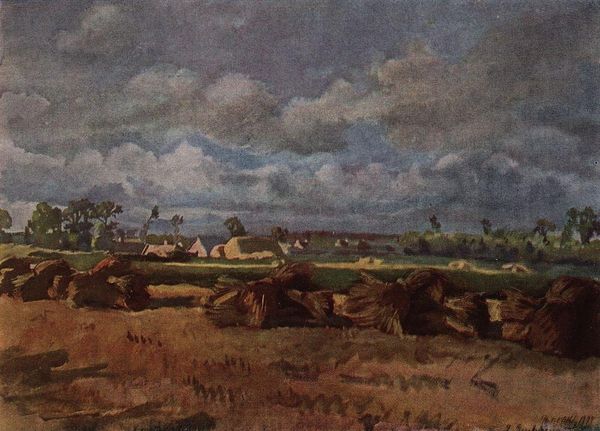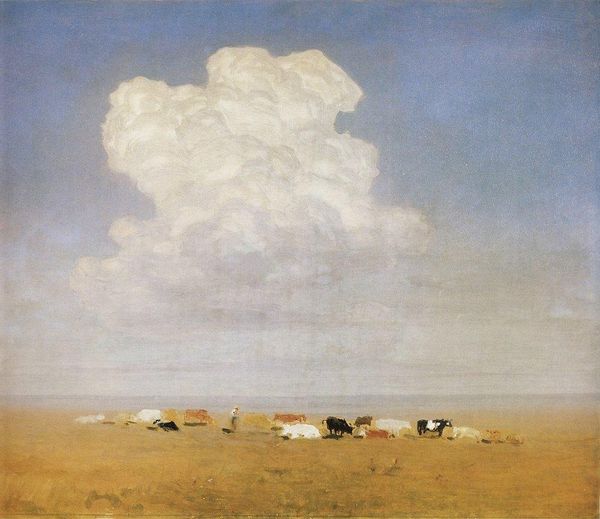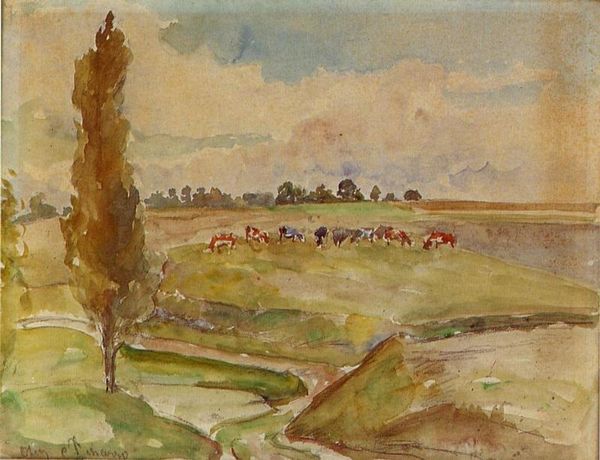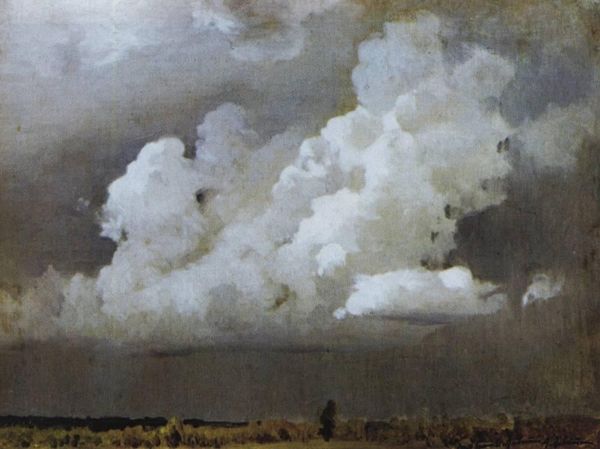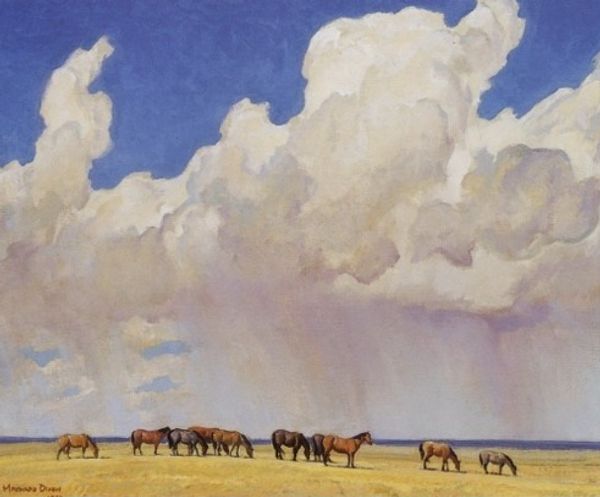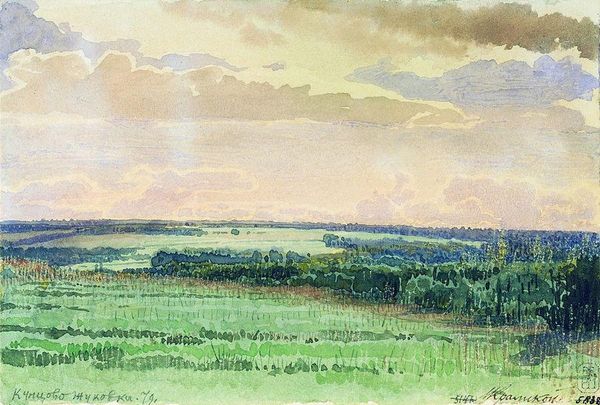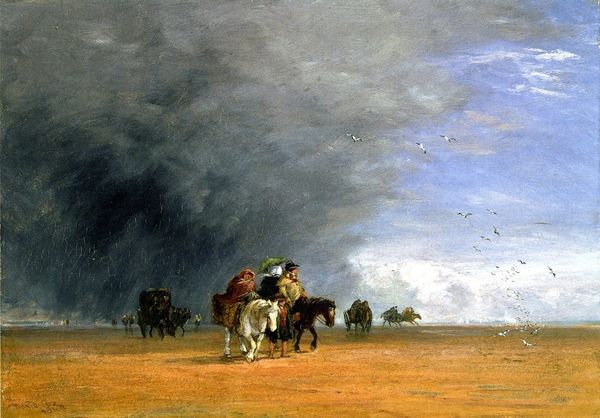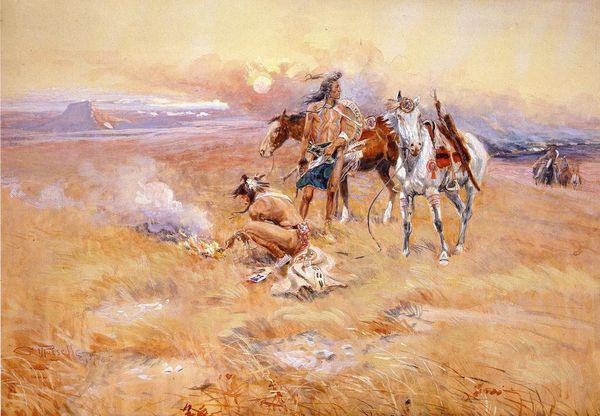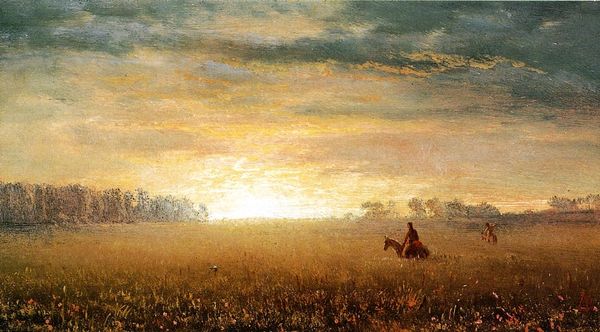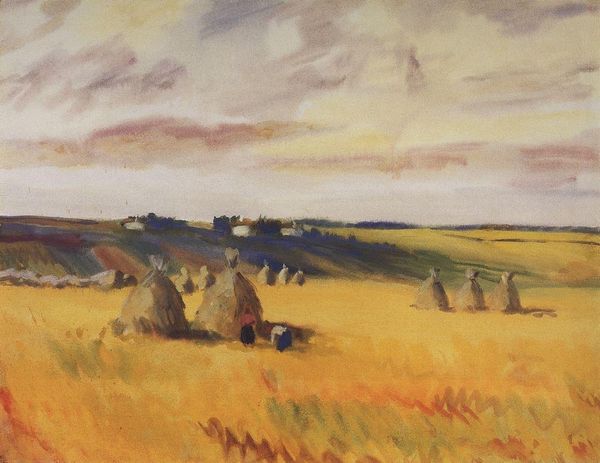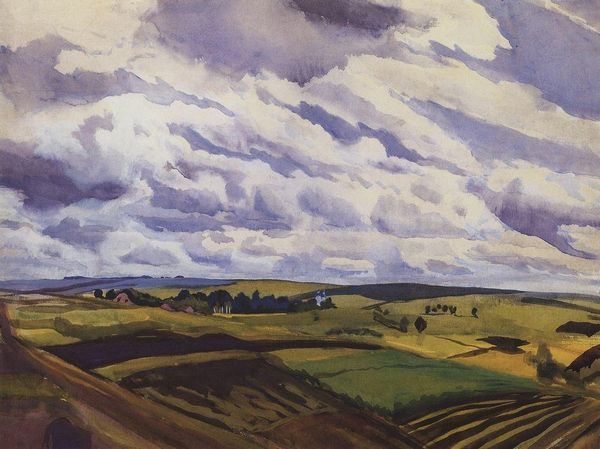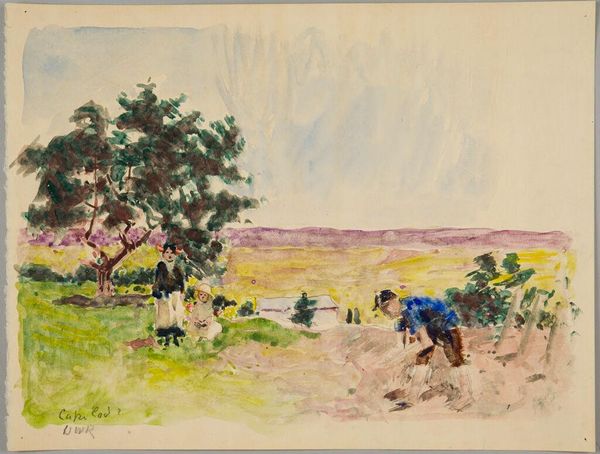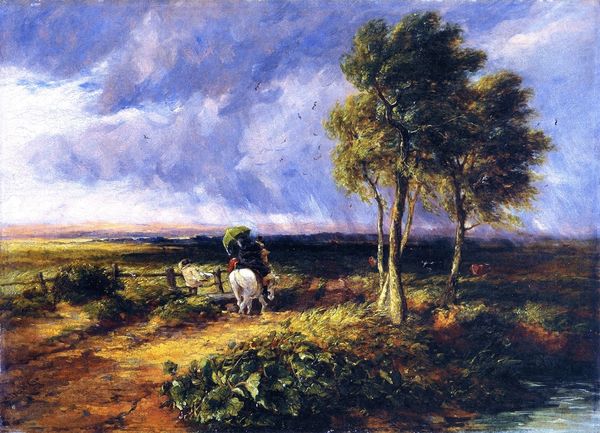
#
sky
#
abstract painting
#
vehicle
#
possibly oil pastel
#
oil painting
#
road
#
fluid art
#
acrylic on canvas
#
underpainting
#
cloud
#
painting painterly
#
watercolour bleed
#
watercolour illustration
#
watercolor
Copyright: Public domain
Curator: Here we have Boris Kustodiev's "Summer," created in 1922. You can find it in the Tretyakov Gallery in Moscow. What are your initial impressions? Editor: It feels both expansive and intimate, doesn’t it? That immense sky – dominating everything. Yet, our eyes are also drawn to the small scene of the carriage within the field, as if nature and humanity coexist in this carefully balanced visual story. Curator: Absolutely. Kustodiev was deeply interested in depicting Russian provincial life, and you can see that clearly here. "Summer" speaks to the societal values placed on leisure and rural existence within a specific cultural context. Editor: Indeed, and it’s hard to ignore the inherent privilege in that depiction of leisurely summer life. While many toiled in those fields, this carriage scene, with its well-dressed occupants, is symbolic of the Russian upper class's idealized existence and maybe even its disregard to some social and political challenges during that period. Curator: That's a critical point to acknowledge. The year 1922 followed a tumultuous period, including the Russian Revolution, that aimed at reordering Russia along lines of equity and it could suggest an act of remembering of better days. Kustodiev continued to portray this pre-revolutionary world even while experiencing revolutionary realities. It really forces you to question the function and message of art and beauty amidst upheaval. Editor: And the rendering of that natural landscape. It almost veers into romanticism and makes you feel something about how the artist’s perception intersects with national identity, especially against those political transformations that was in place at the time it was painted. Curator: Precisely! Kustodiev skillfully presents idealized rural scenery. These landscapes shaped societal ideals, reflecting and also directing conceptions of Russian identity that became quite visible during that time. The location of this painting within the collection of Tretyakov Gallery highlights its role as a piece of the nation’s cultural memory and art canon. Editor: Considering all these layers, “Summer” becomes more than just a peaceful painting of the season. Curator: Agreed. It invites conversations about history, class, cultural identity, and art’s role in revolutionary Russia, urging all of us to consider diverse historical viewpoints on our understandings.
Comments
No comments
Be the first to comment and join the conversation on the ultimate creative platform.
